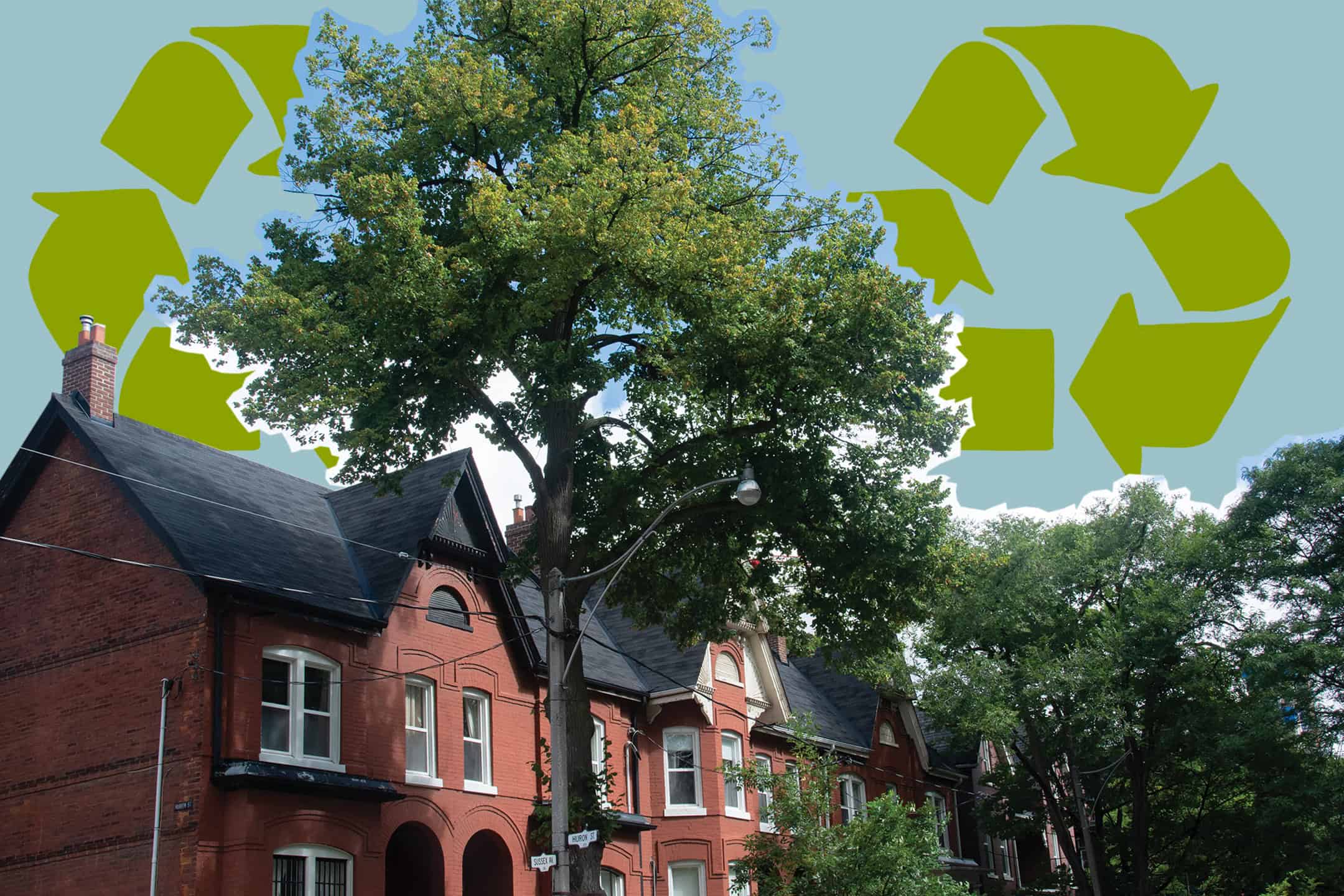Home prices remain out of reach for many Canadians. According to the Bank of Canada, housing affordability reached its worst level in 41 years last December. The Canada Mortgage and Housing Corporation (CMHC) — a national agency dedicated to improving access to quality homes — has recommended measures to address this issue. One measure is to build 5.8 million new houses in Canada by 2030 to help restore affordability.
However, the CMHC’s proposed targets may conflict with Canada’s greenhouse gas emission goals. The country aims to reduce emissions by 2030 to 40–45 per cent of 2005 levels, when 747 megatonnes of carbon dioxide were emitted. Currently, buildings already account for 12 per cent of Canada’s total greenhouse gas emissions. This figure does not include embodied emissions — those released during the production and transportation of raw materials used in manufacturing.
Given the challenge of balancing Canada’s housing and climate goals, U of T’s Centre for the Sustainable Built Environment (CSBE) developed the Future Infrastructure Growth (FIG) model to explore how the country can sustainably build the required number of homes.
What is the FIG model?
The FIG model is a computer simulation that forecasts the emissions associated with different construction strategies for building new homes in Canada. It is based on open data from 50,000 neighbourhoods across the country.
Keagan Rankin — a U of T’s Civil Engineering Department PhD candidate and the first author of the research paper introducing the model — said in an interview with The Varsity that the data the team collected went beyond just emissions data. “We have this data on every single house across Canada, including the locations of roads and water infrastructure,” he said.
The model uses this data to quantify the embodied emissions that constructing an individual neighbourhood in Canada produces. It identifies the housing materials used in constructing each home and calculates the emissions associated with these resources. Since data is sparse in certain areas of Canada, the team used machine learning to predict the associated embodied emissions.
The FIG model then forecasts future emissions by considering the emissions released from constructing new developments on unused land or adding housing to existing developments. It also allows adjustments for factors such as the type of housing built.
Alternative sustainable construction strategies
CSBE researchers investigated potential future emissions in Canada based on different construction strategies for new housing. They evaluated specific techniques such as placing new homes in existing neighbourhoods or reusing current infrastructure for new buildings.
They found that “building housing at the rate required to restore affordability without any changes to construction practices” would lead Canada to exceed its emission targets by 437 per cent. However, more sustainable strategies — such as creating smaller basements to reduce the usage of carbon-intensive building materials — could bring emissions down to acceptable levels.
One solution that stands out for its affordability and significant impact on reducing emissions is building more medium-density housing, such as duplexes and triplexes. These homes have more living units per hectare than single-family homes but fewer than larger apartment complexes. However, the GTA is known for offering very few medium-size houses.
Rankin explained that medium-density housing can be more financially practical. “The main reason [middle-unit housing] promotes affordable housing is because it allows for more supply,” he said. “You’re creating more housing with less materials, and less materials means less cost, which means that the builder isn’t passing on the cost to the final user.”
The feasibility of the model’s recommendations
Rankin acknowledges that implementing the FIG model’s recommendations is quite ambitious. “You’d only [need] to build in existing cities… [avoid] new developments… [and essentially not construct any] single-family homes. So obviously that’s pretty hard,” he said.
However, Rankin emphasizes that the resources to build more sustainably are available. “You don’t have to [create] some high-tech material or [make] crazy design changes to get more sustainable buildings,” he said.
He pointed to one of the findings from the FIG model and said, “One of the best strategies for reducing emissions was just building simple design choices.” For example, limiting underground construction reduces material emissions and is more financially beneficial.
The CSBE is continuing to work on sustainable housing, with researchers exploring areas such as renovations, the sustainability and financial efficiency of high-rise buildings, and more.



No comments to display.